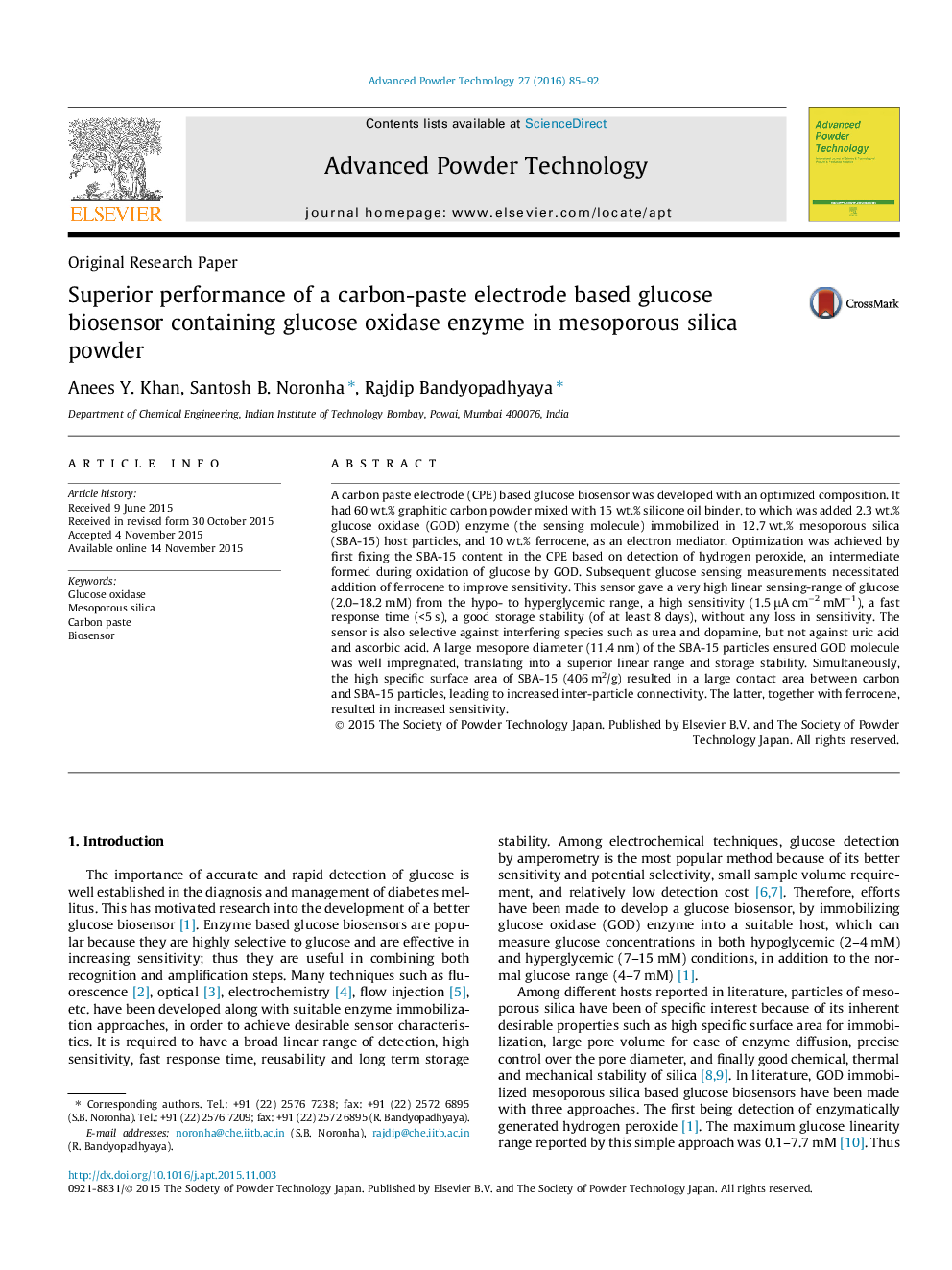| کد مقاله | کد نشریه | سال انتشار | مقاله انگلیسی | نسخه تمام متن |
|---|---|---|---|---|
| 144265 | 438926 | 2016 | 8 صفحه PDF | دانلود رایگان |
• Optimized carbon paste electrode based glucose biosensor developed for sensing.
• SBA-15 with large pore diameter and ferrocene gives high linearity and sensitivity.
• The high linear sensing-range spans both hypo- and hyperglycemic range.
• Sensor has a good storage stability up to 8 days, with no loss in sensitivity.
A carbon paste electrode (CPE) based glucose biosensor was developed with an optimized composition. It had 60 wt.% graphitic carbon powder mixed with 15 wt.% silicone oil binder, to which was added 2.3 wt.% glucose oxidase (GOD) enzyme (the sensing molecule) immobilized in 12.7 wt.% mesoporous silica (SBA-15) host particles, and 10 wt.% ferrocene, as an electron mediator. Optimization was achieved by first fixing the SBA-15 content in the CPE based on detection of hydrogen peroxide, an intermediate formed during oxidation of glucose by GOD. Subsequent glucose sensing measurements necessitated addition of ferrocene to improve sensitivity. This sensor gave a very high linear sensing-range of glucose (2.0–18.2 mM) from the hypo- to hyperglycemic range, a high sensitivity (1.5 μA cm−2 mM−1), a fast response time (<5 s), a good storage stability (of at least 8 days), without any loss in sensitivity. The sensor is also selective against interfering species such as urea and dopamine, but not against uric acid and ascorbic acid. A large mesopore diameter (11.4 nm) of the SBA-15 particles ensured GOD molecule was well impregnated, translating into a superior linear range and storage stability. Simultaneously, the high specific surface area of SBA-15 (406 m2/g) resulted in a large contact area between carbon and SBA-15 particles, leading to increased inter-particle connectivity. The latter, together with ferrocene, resulted in increased sensitivity.
Figure optionsDownload as PowerPoint slide
Journal: Advanced Powder Technology - Volume 27, Issue 1, January 2016, Pages 85–92
